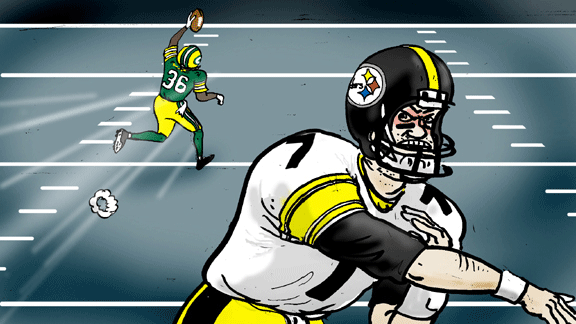
Revel in the power of the pick-six
Safety Nick Collins cut in front of an underthrown Ben Roethlisberger pass, made the interception and weaved his way to the end zone; suddenly, the Green Bay Packers led the Super Bowl 14-0. It was the third consecutive postseason contest in which Green Bay returned an interception for a touchdown. There were three interceptions returned for touchdowns in the 2011 postseason, all by Green Bay, and the playoffs end with the Packers as champions. That is no coincidence -- because the pick-six is the most devastating play in football.
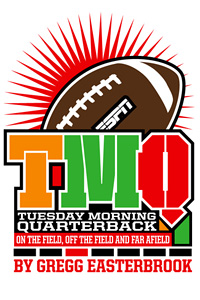
Any type of touchdown counts for the same number of points. But the interception-return touchdown has greater psychological impact: The offense has worked, worked, for field position and, suddenly, a defensive player is sprinting in the opposite direction to the end zone. That's like a giant foot stepping on the mindset of the team surrendering the pick-six.
And a fumble returned for a touchdown has great impact. But football players and coaches know that fumbles occur largely by chance -- even the best players fumble -- but an interception returned for a touchdown signals a breakdown of performance and tactics. The quarterback should not put the ball where it can be intercepted. The coaches should not draw up plays that are vulnerable not just to interceptions but to the intercepting player having an open field. A fumble returned for a touchdown might only mean bad luck; an interception-return touchdown always means a serious screw-up by the offense.
In each of the past three Super Bowls -- Packers over Steelers, Saints over Colts, Steelers over Cardinals -- the signature play for the winners was an interception returned for the touchdown.
TMQ CHEAT SHEET

Gregg Easterbrook on …
Consider this stat: Seven of the Super Bowl victors since 2001 had an interception returned for a touchdown and none of the losers did. Overall, teams that return an interception for a touchdown in the Super Bowl are 11-0.
The pick-six is the most devastating play in football. Mastery of this play -- the Packers returned five interceptions for touchdowns overall this season -- is a core reason the Lombardi trophy is on its way back to Lombardi's town. And Green Bay's result raises the question of whether coaches should be less concerned with sacks on defense, more concerned with creating interception opportunities as a matter of game planning.
TMQ's annual Super Bowl column is my biggest of the year -- that's the plan, anyway. Below you will find:
• An analysis of the Super Bowl.
• Last week, TMQ asked why the Packers would not reveal the helmet type Aaron Rodgers says has protected him against another concussion. Now I've got the details.
• Should parents allow their kids to play football? Knowing the risks, should anyone play football?
• Which NFL team has the most ridiculously overstaffed front office?
• What simple reform could improve emphasis on education at the big-deal level of football?
• New Black Eyed Peas lyrics, proposed by readers.
Stats of the Super Bowl No. 1: Three teams reached the Super Bowl after a 10-6 regular season; all three won.
Stats of the Super Bowl No. 2: Charles Woodson became the third player to win the Heisman, a college championship and the Super Bowl. (The others are Marcus Allen and Tony Dorsett; Reggie Bush did these things, but then returned his Heisman.)
Stats of the Super Bowl No. 3: Green Bay scored 124 points in its past three indoor postseason games.
Stats of the Super Bowl No. 4: The Packers won the NFL championship despite just two rushers topping 100 yards in their 20 games.
Stats of the Super Bowl No. 5: The Packers won the Super Bowl despite Green Bay coaches calling just 11 rushing plays. (Twice, Aaron Rodgers scrambled on called passes.)
Stats of the Super Bowl No. 6: Pittsburgh Steelers QB Ben Roethlisberger had a 97 passer rating in the regular season and a 76.4 rating in the postseason.
Stats of the Super Bowl No. 7: Packers tailback James Starks had 214 more yards rushing in the postseason than in the regular season.
Stats of the Super Bowl No. 8: In the regular season, Green Bay was outscored by Detroit.
Stats of the Super Bowl No. 9: Aaron Rodgers and Ben Roethlisberger are a combined 14-4 as postseason starters.
Stats of the Super Bowl No. 10: The Packers and Steelers are a combined 10-3 in the Super Bowl.

Cheerleader of the Super Bowl: Crystal of the New York Jets, the only team of the final four that brought cheer-babes to the championship round. According to her team bio, Crystal would "rather watch a documentary than a reality TV show" and can dunk a basketball.
Sweet Play of the Super Bowl: With Green Bay leading 14-3, the Steelers faced second-and-11 at midfield. Green Bay fielded a dime defense, but with extra defensive back Jarrett Bush lined up as a middle linebacker. When Ben Roethlisberger checked the defensive front, to him it looked like a nickel, not a dime. At the snap, Bush backpedaled into a slant lane for an interception, and, a few downs later, the score was 21-3.
Sour Coaching of the Super Bowl: Trailing 14-0 in the second quarter, Steelers coach Mike Tomlin sent in the field goal unit on fourth-and-3 from the Packers' 15. Green Bay is a high-scoring team, so cutting the margin to 14-3 doesn't accomplish much. On the day, the Steelers averaged 6 yards per offensive play. Going for it and converting here might have made the Super Bowl a different game. Sure, if the Steelers had gone for it they might have failed, but it's not as though doing the "safe" thing by kicking led to victory.
Sweet Coaching Adjustment of the Super Bowl: Last week, previewing the game, I noted that when Pittsburgh defeated Green Bay on the final snap in their 2009 meeting, the Steelers, trailing by six points, took possession with two minutes remaining, needing to drive the length of the field for a touchdown: Green Bay switched to a soft three-man rush, which allowed Ben Roethlisberger plenty of time in the pocket as the Steelers worked down the field. "If the Packers hold a late lead again and use the three-man rush again, they'll have only themselves to blame," TMQ wrote.
Now it's the Super Bowl. Trailing by six points, the Steelers take possession on their 13 at the two-minute warning. The situation is all but identical to when the teams last played. On Pittsburgh's first snap, the Packers showed a three-man rush; Roethlisberger had plenty of time in the pocket and threw for 15 yards. "Uh-oh," yours truly thought. Then I thought, "There's my lead for Tuesday, the Packers lose by repeating their 2009 mistake."
On each of the remaining four Pittsburgh snaps, the Packers rushed five. Fortune favors the bold! Green Bay defensive coordinator Dom Capers must have remembered the 2009 tactics and realized he had to change looks. Pittsburgh seemed shocked by the sudden blitzing -- the only blitz surge by either team in the contest. Surely the Steelers had reviewed film of 2009 and expected, if Green Bay was holding a late lead, to see a three-man rush. Four straight blitz downs is obviously risky. But Roethlisberger never seemed to realize what was happening and adjust by throwing slants or goes. Pittsburgh had a timeout but never used it -- Steelers coaches could have stopped the action to ensure Roethlisberger realized what was happening. The unused timeout can be donated to charity.
In the final minute of the NFL season, the question was: Would Green Bay repeat expected tactics or innovate? The Packers innovated, and won.
"Friday Night Lights" Update: The series finale is Wednesday night on DirecTV, with the entire fifth season migrating to NBC soon. TMQ will miss this show, as will many lovers of football and of television drama. The finale episode is titled "Always," and so, presumably, is sentimental.
Here's a tidbit from a recent episode. The East Dillon Lions, at 8-1, are described as needing to win their final regular-season game to reach the playoffs -- and of course they win with an improbable touchdown on the last play. But in the crazed Texas system, in which 128 high schools in each of two 5A divisions advance to a six-week postseason, an eight-victory team would already be comfortably in the playoffs. This past fall, high schools at 5-5 and 4-6 made the Texas playoffs, as did one high school at 2-8.
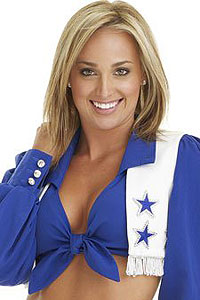
Obviously This Item Exists to Justify Some Cheerleader Pictures: Because the Packers and Steelers are on the short list of NFL teams without cheer-babes, the Super Bowl was staged sans cheerleaders. The Cowboys' cheerleaders offered to perform at the game, but the NFL said no -- no Dallas or Cowboys logo was visible anywhere inside the stadium, per league dictum. Cowboys cheerleaders Carey DePasquale and Brooke Sorenson danced outside the game, which creates a perfectly valid reason to append some cheerleader pictures to the Super Bowl column.
Super Bowl Analysis: Maybe it's just as well that Vince Lombardi did not live to see a Super Bowl in which, adjusting for sacks and scrambles, coaches combined to call 89 passing plays and 30 rushing plays. Both defenses spent more than half the game with only two defensive linemen on the field, fairly begging the opponent to rush. Twice, when Pittsburgh faced second-and-6 -- hardly an automatic passing down -- the Packers lined up in a 2-4-5 as though it were third-and-long. Considering Pittsburgh rushed for 126 yards on an average gain of 5.5 yards and Green Bay kept offering a light front of only two defensive linemen, it's hard to understand why the Steelers did not run more. No wait, it's easy to understand -- this is 2011.
In many ways, the Super Bowl boiled down to a contest of Pittsburgh turnovers versus Green Bay drops. The Steelers gave up the ball three times, versus none for the Packers, and although a team can overcome minus-1 or minus-2 in turnovers, minus-3 is quite a hill to climb. So why did the game go down to the final seconds? Green Bay receivers dropped five right-on-the-money passes, including three drops on third downs, followed by punts.
Excluding kneel-downs, the Packers had 10 offensive possessions ending in four scores and six punts. Three of the punts came after dropped passes that would have been first downs. Had Green Bay receivers simply held the ball, the game might have been a walkover, with Aaron Rodgers posting spectacular stats. That's something considering the Steelers had the No. 1 defense in the regular season. Troy Polamalu played poorly and was turned inside-out on a pivot route by Greg Jennings for a fourth-quarter Packers' touchdown. James Harrison was efficiently contained by Green Bay's offensive line -- and rarely moved around by Steelers' coaches. Why did the Pittsburgh game plan aid the Packers' blockers by almost always having Harrison come over left tackle?

Roethlisberger, who's been blah in the postseason, badly underthrew his receiver on the pick-six after his arm was struck, then badly overthrew Mike Wallace open deep. That possession ended on a missed Steelers' field goal attempt. Aaron Rodgers, for his part, threw a perfect pass into good coverage for the touchdown that put Green Bay ahead 21-3, then another perfect pass, again into good coverage, for 31 yards to Jennings on third-and-10 with six minutes remaining, setting up a late field goal and panic time for the Steelers.
Rodgers finished the postseason with nine touchdown passes and two interceptions; Roethlisberger, four of each. Green Bay's defense finished the entire season with 32 interceptions, Pittsburgh's had 22. The better team prevailed.
Steelers coaches made many curious calls. With Pittsburgh down 21-17 late in the third quarter, facing third-and-2, the Steelers threw incomplete -- though Green Bay was in a two-man front, which is good to run against. And the pass wasn't an attempt for a home run, just a dinky short thing. Five times the Steelers threw a short hitch; they never attempted a hitch-and-go, which the short hitch sets up. Down 28-17 and taking possession with 11 minutes remaining, the Steelers did not no-huddle. At the end, they were desperate for clock.
The Steelers' deuce play sure was sweet; fake up the middle, then Roethlisberger sprints left and pitches an option pitch to Antwaan Randle El. The receiver proceeded to celebrate wildly, though the Steelers still trailed -- one of many indications Pittsburgh's heads weren't in the game.
Stop Pretending NFL Players Are College Graduates: Last month, Tuesday Morning Quarterback laid out a simple, practical idea to cause football-factory universities to care more about educating their players. There is also a simple, practical idea that would help the NFL emphasize college education -- namely, the NFL should stop pretending players are college graduates.
Check any NFL game program, any NFL media guide, any NFL roster anywhere, including on ESPN.com -- every player's name is followed by the name of a college or university. True, it's biographical information, but the impression is given that the player is a graduate of the school. Yet only "half of the NFL's players have college degrees." So why is a college or university listed after every player if only 50 percent graduated?
This is done to create an illusion -- an illusion that pro football players, when in college, studied and earned their degrees. That makes what Brian Kenny calls the "athletic-industrial complex" seem practically civic-minded: get a scholarship, graduate, then take your college colors and fight song into the NFL. When NFL game announcers, including on ESPN, talk on television about a player's college, viewers could infer the player is a graduate of the college. Roughly half the time, this isn't so.
Sure, every player at some point attended the school listed after his name in the program. But the NFL -- and the NCAA -- want you to think he graduated. That's more respectable. That seems to respect education over sports-marketing big bucks.
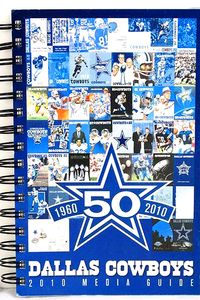
There's one exception to this rule, and the exception points the way to a valuable reform.
On NBC's "Sunday Night Football," players introduce themselves in brief video clips, then mention a school. About one in 10 mentions a high school. Perhaps the intent is a shout-out to friends back home. Or maybe the players are being honest about the school they actually graduated from.
This season on "Sunday Night Football," DeSean Jackson of the Eagles introduced himself as from Long Beach Poly, a wonderful prep school, the West Coast's answer to DeMatha High. In game programs, Jackson is listed as from the University of California at Berkeley. By introducing himself as from Long Beach Poly, was he being honest -- because he graduated from high school but not from college?
On "Sunday Night Football," Trent Williams of the Redskins introduced himself as from Longview High in Texas; Robert Mathis of the Colts introduced himself as from McNair High in Atlanta; Greg Jennings of the Packers introduced himself as from Kalamazoo Central High of Michigan; Aaron Curry of the Seahawks introduced himself as from Smith High in Fayetteville, N.C.; Miles Austin of the Cowboys introduced himself as from Garfield High in Garfield, N.J.; there are many similar examples.
Were they shouting out their hometowns -- or being honest, where other NFL players deceptively create the impression they are college graduates?
Myron Rolle of the Tennessee Titans holds a master's in medical anthropology from Oxford University. On television, he can identify himself as from Oxford, rather than from Florida State because his highest degree is from Oxford. But if you attended college and never graduated, then high school is your highest degree -- and the honest thing to do is to introduce yourself by your high school.
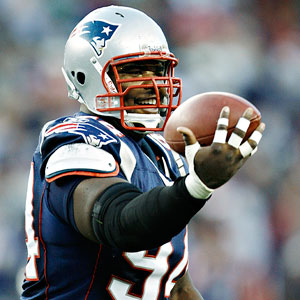
So here is the simple, practical idea TMQ advocates: On NFL rosters and in NFL media guides, players should be listed only by the highest school they graduated from. If a player graduated from Hometown High, then played at the University of Texas or the University of Miami, in the NFL, his school should be listed as Hometown High.
Listing some big college for a player who was at the school but failed to graduate is deceptive, creating an impression of educational achievement where none occurred. It also grants credit where none is due. Last year, Ty Warren of the Patriots returned to Texas A&M to complete his diploma requirements. Congratulations! Warren should feel proud. Yet, under the current system, the NFL allows him to pass himself off as a Texas A&M graduate whether he earned his degree or not. Under a system of highest-only, he would have had to admit for years that he was only a high school graduate -- but then would have received full recognition when he walked to "Pomp and Circumstance" in College Station.
National Football League -- stop deceiving the public by making it appear that all your players are college graduates. If they've only graduated from high school, then list them that way. Be honest with the public about the low educational standing of many NFL players, while allowing those with true educational standing the credit they deserve.
If NFL players listed only the schools from which they actually graduated, game programs and media guides would be full of high school listings -- rather than the college illusions presented today. Many teams, and many players, would feel embarrassed. That would lead to positive reforms.
The "Declaration of Independence" Is Way Too Short a Name: Once, legislation had simple names, such as the Clean Air Act of 1970. Changes had simple names -- when the Clean Air Act was amended in 1990, the bill was simply titled the Clean Air Act Amendments of 1990. Oh, for these bygone halcyon days.
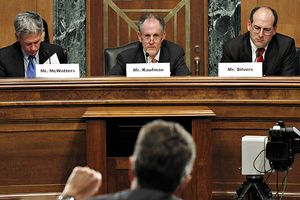
George W. Bush's anti-terrorism bill of 2001 was not called the Anti-Terrorism Act of 2001, it was the Uniting and Strengthening America by Providing Appropriate Tools Required to Intercept and Obstruct Terrorism Act of 2001. (This is the formal name of what's usually called the Patriot Act.) The immigration law liberalization act that failed in the Senate in 2010 was not the Immigration Law Liberalization Act of 2010, it was the Development, Relief and Education for Alien Minors Act of 2010. The science funding act of 2007 was not the Science Funding Act of 2007, it was the America Creating Opportunities to Meaningfully Promote Excellence in Technology, Education, and Science Act of 2007. (The split infinitive suggests more funding is needed in English rather than science.)
Barack Obama's health care reform bill was not the Health Care Reform Act of 2010, it was the Patient Protection and Affordable Care Act of 2010. The House bill aimed at overturning Obama's reform is not the Health Care Reform Repeal Act, it is the Repealing the Job-Killing Heath Care Law Act.
These absurd names create marketing slogans -- the immigration liberalization bill is called the Dream Act by proponents, the science funding act is called the America Competes Act. The names also create political cheap shots. You oppose the Patriot Act? You're in favor of a job-killing bill?
Legislation is even requiring overloaded names retroactively. The Title IX program for women's sports began as the ninth title of the plainly named Education Amendments Act of 1972. In 2002, that portion of the law was renamed the Patsy Mink Equal Opportunity in Education Act, after Rep. Patsy Mink, the first woman elected to Congress from Hawaii, who died that year. The complex new name both commemorates Mink and creates a political cheap shot -- you are opposed to equal educational opportunity? (Setting aside that Title IX isn't about education, it's about funding for athletics.) Here is what famous legislation of the past would be titled if enacted today:
• The Wilson-Gorman Tariff Act of 1894 would become the Force the Spoiled, Indulgent Rich to Throw Us Crumbs Act of 1894.
• The Neutrality Acts of the 1930s would become the Let the French Solve Their Own Problems and Besides We Don't Like Their Pastry Acts.
• The National Environmental Policy Act of 1970 would become the Snail Darters Are More Important Than People Act of 1970.
• The Non-Intercourse Act of 1809 would become the Abstinence Advocacy Act of 1809.
Should Football Be Played? Early this season, I promised to review some of the technical literature on long-term health impacts of playing football. Bottom line: The literature is inconclusive -- probably because relatively few football players have been studied. There's an apparent need for a "longitudinal" study of a large number of football players over a significant period of time. I hope a study of this nature is in the works. If not -- NFL and NCAA, you roll in football cash. Give a chunk to an independent third party, such as a top medical school, to fund a long-term longitudinal study that would operate beyond your control.

Below are some summaries of studies. I give most emphasis to concussion research because although orthopedic medicine continues to improve, there's practically nothing neurology can do about brain trauma. The concussion studies take into account that head injuries are more likely to be reported now than in the past. I do not note suicides of former football players because incidence does not appear to exceed the suicide rate for males of the same ages.
This 2005 study on the neurology of football players late in life found, "Although there was not an association between recurrent concussion and Alzheimer's disease, [the researchers] observed an earlier onset of Alzheimer's disease in the retirees than in the general American male population." The study found that 61 percent of former NFL players had had at least one concussion and that 24 percent had suffered at least three. Conducted mainly at the University of North Carolina, the study seems typical of the inconclusive character of much long-term football health data. The data raise a red flag (earlier onset of Alzheimer's) but also leave a question mark (no association between concussions and Alzheimer's.)
This 1990 study found that former professional football players had notably shorter lives -- 15 years shorter -- than similar men who did not play football. Because those studied played in the 1950s-1970s period, when orthopedic care was much less sophisticated than today -- and when it was common for NFL players to inject themselves with Novocain and similar painkillers before games, quite bad for long-term health -- the likelihood is that the lifespan gap between football players and non-players is closing. Still, the study is spooky stuff.
This 2007 study of a small number of NFL players late in life found they had healthier body chemistry than nonsmokers of the same age. Because former football players were athletes, other things being equal, we'd expect them to be healthier than the population as a whole.
The study described here, based on the injury reports of NFL teams, found that 6 percent of NFL players suffered a concussion in the 2010 season. This study also finds a decade-long average of 3 percent per season concussion likelihood. That suggests that over four years of high school and four years of college football, a player runs a significant risk of a concussion.
Given that about 1.1 million boys play high school football, 3 percent per season suggests about 33,000 high school football concussions per season. That estimate is the scariest thing I've seen in football health data -- and not just for the sheer numbers. Most high school football players lack regular physician supervision, many high school football coaches either don't know concussion symptoms or deliberately ignore them, many prep programs lack a certified trainer. Because the overwhelming majority of high school players never receive any college athletic scholarship or other tangible benefit from their football risk exposure, concussions suffered by high school players are more troubling than concussions suffered by college and pro players, who receive benefits in return for their risks.
Research described here finds an association between football concussions and sleep apnea. Research described here explores the rising weight of football players, including at the high school level. This article explores the idea that studies understate the incidence of neurological harm from football. And this important article by Ben McGrath of the New Yorker considers whether concussion harm from football is so bad that the whole sport should be reassessed.
Given what's in these studies, what should we think of football?
First, we should think that every player, including at the high school and middle school levels, should be in an advanced helmet (see the item on Aaron Rodgers' helmet). Advanced helmets are no cure-all; game rules and practice standards must be changed. But advanced helmets are a first step.
Next, we should bear in mind that other sports are dangerous, too. The Center for Injury Research and Policy has found that football is the most dangerous high school sport, at 3.5 serious injuries per 1,000 player-games -- and girls' soccer is the second-most dangerous at 2.1 serious injuries per 1,000 player-games. That other sports are also risky does not excuse football, it just puts the question in perspective. Girls' soccer causes quite a bit of harm, yet there's no movement to label it bad for girls.
Risk must be weighed against benefits. Bicycle riding, for instance, can be dangerous, including as a cause of head injury. But bicycle riding also has lots of benefits. If we only considered the numbers of head injuries suffered while riding bicycles, we would want bikes banned. Instead, we consider the risks versus the benefits, and whether changing the rules (in the case of bicycles, stricter bike-helmet regulations) can make the risk-benefit relationship better.
Playing football, or girls' soccer, has many benefits. For the 1.1 million high school players, by far the largest football cohort, the sport teaches work habits, teamwork and self-discipline. Sports help players build self-confidence and find a place in the high school social order -- finding a place in high school is challenging to practically every teen, boys and girls alike. Each year, many thousands of boys who otherwise would be flunking out of high school are working to get grades at least decent enough for them to stay eligible for football. For the roughly 20,000 college players on scholarship, football opens the door to college. For the additional roughly 10,000 college players who are not on scholarship but received an athletic admission, football helps do the same.
True, many football players in college don't graduate, and many high school players receive no college offers after compiling only a minimum GPA -- with the result that they can't get into college on regular admission. But many high school and college students not involved in athletics have these problems, too. Overall, members of high school and college sports teams have better academic records than students as a whole. To be a varsity athlete, you have to learn self-discipline and time management.
Football is mainly a good experience for most who play the sport. Of the former high school, college and professional football players I have talked to over many years, about 80 percent consider football to have been important to them, about 10 percent wish they hadn't played and about 10 percent shrug on this question. As life goes, that's not bad.
TMQ's Advice to Parents: Many parents wonder whether they should allow their children to participate in football. Here's my view:
Advice No. 1: No one should play football in pads before eighth grade. This is the position taken by the American Academy of Pediatrics, and it's also the TMQ view, based on my experience as a county-league flag coach, a middle school (tackle) head coach and a father of two football players.
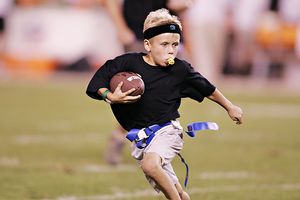
The juvenile brain case is weak because the skull has not finished maturing. Kids below eighth-grade age (age 12 or 13) run a high risk both of concussions and of the minor brain trauma that lacks immediate symptoms but does cumulative harm. Many concussions are not caused by single big hits but rather by the accumulated consequences of routine hits. Although youth players don't hit as fast or hard as older players, the brain case of a youth player is more vulnerable than an older player's.
The younger a player is, the lower his odds of benefiting from football. Football at ages 10, 11 or 12 is dominated by early-maturity boys; prep and college football tends to be dominated by late-maturity boys. (The best advice you can give anyone who wants to become a college football player is to start puberty late. One of the questions a smart recruiter asks is, "Has he started shaving?" The desired answer is no.) Because youth football is dominated by early-maturity boys, there is little relationship between who's good at age 10 or 11 and who's good as a high school senior. In youth football, early-maturity boys always outplay late-maturity boys: Neither group learns much. Kids in pads at youth-league ages are running a neurological risk -- this new study finds a rise in concussions in youth sports -- in return for a very low likelihood of reward.
Youth tackle football is usually of low quality -- often 22 boys falling down simultaneously. Many games are lopsided, owing to the best boys wanting to be on the top teams. But when a youth-league tackle football game ends 50-0, no one on the winning team has learned anything. Youth league football is sustained as much by the egos of the parent-coaches as by anything that happens on the field. And a youth league coach who's boasting about a 50-0 win is a guy who knows nothing at all about football.
Parents, have your kids play flag football until eighth grade. A good flag program teaches boys (and occasionally girls) how to be in the right place at the right time in a football game, and if children learn that by eighth grade, they have done well. When the high school feeder program starts at eighth grade, then switch to tackle. Parents, I did not allow either of my boys to put on pads until eighth grade.
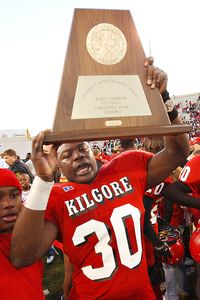
Advice No. 2: Once high school is reached, be wary of monster coaches. Many high school football coaches do a great job. But many treat players in ways that would, legally, be child abuse if done by a teacher. Monster coaches don't teach, they only destroy boys' self-worth, and they might physically harm the boys through the punishment drills bad coaches impose.
How to spot a monster coach? Ask to attend a practice. A conscientious football coach is happy to have parents watching practice (although he won't talk to you during practice, so don't even think about it, and never bother the coach about your child's playing time). A coach who will not allow parents to observe practice is likely a monster coach. Unless your boy is a gifted athlete with great size or speed, someone who might draw college recruiting interest -- and be realistic, even most high school stars never get a college offer -- playing for a monster high school coach is a negative experience.
On the other hand, a losing season with a conscientious coach can be a positive experience. And a winning high school season with a kind, skillful coach is one of the finest things that can happen to a teen boy.
Advice No. 3: Parents, don't be afraid of football. There is risk involved in driving to the movies, but you let your kids go. For most high school and college players, football has more upside than downside. To reduce the downside, don't play tackle before eighth grade; be sure your son wears an advanced helmet (see below helmet item) even if you must buy it yourself; and, if your high school has a monster coach, walk away and don't look back.
Deion's Youth Team: When Deion Sanders was chosen on Saturday for the Hall of Fame, he made a great show of being at a youth football game, declaring his youth team meant more to him than Canton. This was intended to cause Sanders to come across as aw-shucks sincere -- to me, he came across as incredibly phony, pretending he was so intent on coaching young boys that he'd forgotten what day it was. That aside -- youth football in February?
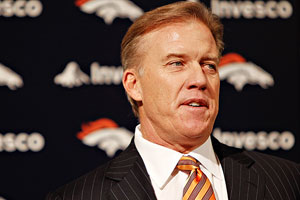
TMQ's Annual NFL Pinafore Count: No organization on Earth -- not the UAW, not the Pentagon -- is more top-heavy than the NFL. Consider that the Denver Broncos have an executive vice president of football operations (John Elway), a president and a general manager. That's two people to supervise one person!
In negotiations with the NFLPA, the league claims it needs givebacks owing to ponderous costs. How about fewer front-office types with grandiose titles and redundant responsibilities? Here, gleaned from the NFL's official Record and Fact Book, is TMQ's annual Super Bowl look at NFL overstaffing -- organizational charts that would make the HMS Pinafore seem a lean, well-run ship.
• The Baltimore Ravens have a president, an executive vice president, a senior vice president, 13 regular vice presidents, a senior director and 12 regular directors. That's 29 people with senior titles -- roughly one high-ranking executive for each two players on the roster. And the trainer isn't just the trainer or the certified trainer (all sports organizations need a trainer with certification), he's the vice president of medical services/head certified athletic trainer.
• The Buffalo Bills, despite having a president, a CEO, a general manager, four senior vice presidents, six vice presidents, one executive director and six regular directors, nevertheless still require someone with the title "consultant." What does the consultant consult on -- figuring out what all the people with senior titles should do? Plus, the Bills have a vice president of government relations -- a lobbyist.
• The Houston Texans have a chairman and CEO, two vice chairmen, a general manager, a president, two senior vice presidents, a CFO, a CAO, four regular vice presidents, 17 directors, a vice president for finance (despite having a CFO) and a director of accounting (despite having a CFO and a vice president for finance). And that's before all the people on the football staff.
• The Jacksonville Jaguars have a senior vice president of football operations and an executive director of football operations.
• The Miami Dolphins have a chairman of the board/managing general partner, a CEO, an executive vice president of football operations, a senior vice president of football operations, a general manager, a chief administrative officer, seven other senior vice presidents, four senior directors, seven regular directors and a senior director of cheerleaders and entertainment.
• The New England Patriots has a chairman & CEO, a president, a CAO, a COO, a publisher, a director of football and a "senior football advisor."
• The New York Jets have a chairman & CEO, three executive vice presidents, a general manager, a CFO, six regular vice presidents, nine senior directors and seven regular directors. The Jets have a director of football administration and a manager of football administration.

• The Tennessee Titans have the league's most inflated title -- Bud Adams is owner/chairman of the board/CEO/president. Ferdinand the III could only have dreamed of such a title. Well, maybe Ferdinand III was satisfied with his formal title: "By the grace of God elected Holy Roman Emperor, forever August, King of Germany, King of Hungary, Bohemia, Dalmatia, Croatia, Slavonia, Rama, Serbia, Galicia, Lodomeria, Cumania and Bulgaria, Archduke of Austria, Duke of Burgundy, Brabant, Styria, Carinthia, Carniola, Margrave of Moravia, Duke of Luxemburg, of the Higher and Lower Silesia, of Wurtemberg and Teck, Prince of Swabia, Count of Habsburg, Tyrol, Kyburg and Goritia, Marquess of the Holy Roman Empire, Burgovia, the Higher and Lower Lusace, Lord of the Marquisate of Slavonia, of Port Naon and Salines."
• The Arizona Cardinals have an owner, a president, a general manager, a COO, a CFO, seven vice presidents, a director of football administration, a senior director of ticketing, a senior director of ticket sales, a director of player personnel and a director of pro personnel. What's the difference between "player personnel" and "pro personnel"?
• The Carolina Panthers, in addition to an owner/founder, have a president, a general manager, a general counsel, a CFO, a controller, 13 directors, two executive producers and a "director of cheerleaders and mascots." Ouch! Team management thinks the cheerleaders, who rehearse and work out to the point of exhaustion, are in the same category as the guy who wears the ill-fitting felt suit.
• In addition to the league's second-most inflated title -- owner/president/general manager -- the Dallas Cowboys have an executive vice president of brand management.
• The Green Bay Packers have a president and CEO, an executive vice president/general manager/director of football operations, a vice president of football administration, six other vice presidents, 12 directors, three coordinators and a coaching administrator. Given that the Packers are the NFL's sole publicly owned franchise, it appears that stockholders have not pressured for a lean front office.
• The New Orleans Saints have two people with the title owner. The San Francisco 49ers also have two people with the title owner. The Minnesota Vikings have three people with the title owner.
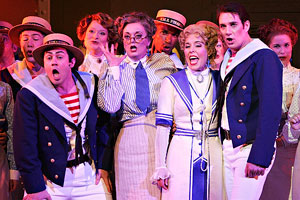
• The New York Giants have a president/CEO, a chairman/executive vice president (how is it possible to be a chairman, meaning in charge, and simultaneously a vice president, meaning an assistant to the person in charge?), a senior vice president/general manager, 10 other vice presidents and 11 directors, including a director of research and development. A director of R&D? Apparently the GPS-guided football project is not just a rumor.
• The Seattle Seahawks have a chairman, a CEO, a COO, a CFO and a general manager, plus 14 vice presidents and directors.
• The Tampa Bay Buccaneers have three people with the title "co-chairman," all reporting to the president, plus 14 directors and 12 managers.
This year's most top-heavy NFL bureaucracy is that of the Cleveland Browns. In addition to having an owner, a president, a general manager, an executive vice president, a senior adviser, an executive adviser (maybe they advise each other?), a lawyer with the title general counsel & special counsel, three senior vice presidents, seven regular vice presidents, a controller and a stunning 20 directors, Cleveland has both a vice president of operations and a director of operations.
Bear in mind, although the NFL as a whole is a multibillion-dollar operation, individual franchises average a little less than $250 million in annual revenue. That's a lot to you and me but not huge by business standards -- about the same as the 2011 syndication fees for "Two and a Half Men."
If Wal-Mart Stores Inc. had the same ratio of revenue to executives as the Browns, Wal-Mart would have 1,632 presidents, 4,896 senior vice presidents, 11,424 regular vice presidents and 32,640 directors.
Stop Me Before I Blitz Again! A sudden, unexpected wave of blitzers on Pittsburgh's final four snaps helped win the Super Bowl for Green Bay. But overall, both teams blitzed little. On 119 combined offensive plays, there were 12 blitzes -- 10 percent, well below the league average of 20 percent blitzing. That there had been so little blitzing until the final four snaps was a reason the late blitzes worked: They came as a surprise.
As TMQ notes, sports writers and sportscasters regularly overstate the frequency of the blitz -- either because they're not watching the game or because they don't know what they are watching. Yours truly clicked on a prominent sports TV show in the hotel after returning from Cowboys Stadium to hear, "The Packers brought the heat on Ben Roethlisberger with constant blitzing." Actually the Packers ran eight blitzes on the 64 Pittsburgh snaps. If constant blitzing were the surefire tactic sportsyak suggests it is, all defenses would blitz all the time.
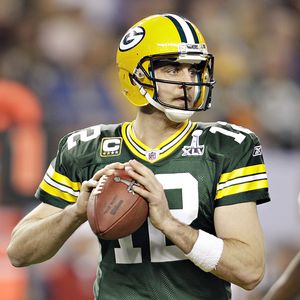
What You Need to Know About Aaron Rodgers' Helmet: Last week, I took the Green Bay Packers to task for refusing to say what kind of helmet Aaron Rodgers switched to after his early-season concussions. Rodgers has said the new helmet protected him in a vicious helmet-to-helmet hit in the NFC title game. Across college and high school football, many players, coaches and parents aren't sure which helmets on the market afford the best protection. I asserted that with concussions an issue of wide concern, the public needed to know what Rodgers would wear in the Super Bowl. For that matter the public needed to know what the other starting quarterback, Ben Roethlisberger, would wear -- Roethlisberger switched helmet types this past spring, hoping to avoid another concussion.
In the Super Bowl, Rodgers wore the Schutt Air XP and Roethlisberger wore the Riddell Revo Speed. Both helmets have advanced features that reduce -- but surely do not eliminate -- concussion incidence. These, and a few similar models, should be on the heads of every high school, college and pro football player. Unfortunately, even many NFL players continue to wear helmets with inferior engineering.
Here's a primer. Until 2002, almost all football helmets were "shell" designs -- smooth globe shapes, with the outer part fairly close to the player's head. Shell helmets did a good job of protecting the skull -- as recently as the 1960s, football deaths from fractured skulls were distressingly common -- but not such a good job of protecting the brain inside the skull. Concussions, long a problem in many contact sports (and in other sports such as diving), became more of an issue as football players grew stronger and faster, colliding with increased force.
In 2002, Riddell, the NFL's official supplier, began to sell the Revolution, the first helmet designed with concussion reduction in mind. The Revo had more "standoff" than traditional helmets -- more distance between the player's head and the outside. More "standoff" means more space for cushioning. Research found that players wearing Revos were about one-third less likely than other players to suffer concussions. So the new helmet idea was an improvement, though no panacea. Nobody has yet come up with a panacea for concussions, not even on paper.
James Collins, at that time the football coach at my kids' high school, followed sports medical research; when he heard about the Revo, in 2004, parents staged a fundraising drive to equip the football team with those helmets. That put a high school ahead of most of the NFL and NCAA, which did not rush to embrace the Revo. Why? Compared with traditional shell helmets, players thought the Revo looked funny, giving them a space-alien appearance. At the high school level, you wear what you are handed. But in the NFL, players are allowed to choose what they wear, and many would not place a Revo on their heads. The most common NFL helmet continued to be the Riddell VSR4, a 20-year-old design that is outdated but offers a smooth shell appearance players find stylish.
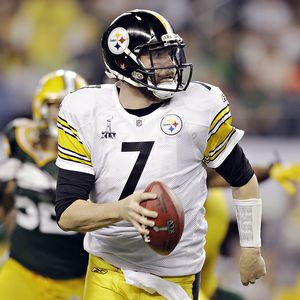
Schutt, the other leading helmet manufacturer, soon began to sell two advanced models, the DNA and the Ion, with concussion-resistant engineering, including improved cushioning material. Same problem: These helmets' large "standoff" made players think they looked funny. Glenn Beckmann, a Schutt official, told me, "The DNA and the Ion absorb more impact than other models, but there is a tradeoff and, in the player's mind, an important one. It's the 'mirror test.' One of the first things a player does when he puts a helmet on is walk to the mirror to see how it looks. Current players in the NFL grew up with the traditional standoff helmet shells. From the time they started playing as a kid, that's what they've been comfortable with. They're not accustomed to seeing larger helmets on their heads. So when they try on one of the large standoff helmets, they don't like the way it looks. It's a reason the most widely worn helmet in the NFL is still the Riddell VSR4, a traditional helmet. It looks the way players think a helmet should look."
Why would NFL players not want to reduce concussion risk? Many muscular young men believe they are invincible. Others are fatalistic -- believing that if a concussion is going to happen it will happen, regardless of headgear.
Aware of the aesthetic issue, Riddell introduced a new model, the Revo Speed, with advanced concussion resistance but more similar to the traditional shell look. Schutt's response was the Air XP -- better concussion protection, traditional appearance. The new Rawlings Quantum, out soon, has the same set of design goals -- better concussion resistance in a traditional fashion look. Bucking the trend is the Xenith X1, made by a startup firm, which is proudly bobblehead in appearance but aims for maximum protection.
Today, many NFL players continue to wear the obsolete VSR-4 and similar models: The NFL encourages use of advanced helmets but won't mandate this. The NFL appears to believe that mandating any particular helmet would make the league liable for any harm someone might suffer after donning a helmet of that type. As TMQ detailed here in November, this view is likely to be incorrect, in legal terms. But the belief is common in the NFL. The NCAA won't mandate helmet types either, though many colleges simply require players to wear nothing but advanced Schutt or Riddell helmets.
As for Roethlisberger, after having concussion problems in 2009, he switched in 2010 from the VSR-4 to the Revo Speed. He's had no problems since. After Rodgers suffered two concussions this past fall, he switched to the Air XP. This helmet is not quite as advanced as the same company's DNA and Ion models, but the Air XP looks cool, so players will put it on their heads. When DeSean Jackson suffered a concussion early in the 2010 season, he switched to an Air XP.
TMQ's contention is that the NFL should mandate that only advanced helmets -- the Revo and Revo Speed, the Schutt Ion, DNA and Air XP, the Xenith and the upcoming Rawlings Quantum -- be allowed. Hines Ward of the Steelers noted at Super Bowl media day that if the NFL really means what it says about reducing concussion incidence, why doesn't it require players to wear the safest helmets? That the NFL will not require maximum safety because it seems to fear liability more than it wants health reflects very poorly on the league. Yes, NFL players are grown men who are aware of risks. But the league doesn't allow them to choose what color socks to wear. Why does it allow them to choose inferior helmets?
If the NFL switched to mandating that players wear the safest headgear, this would set a positive example for the high school ranks. Far too many high schools buy whatever helmet's cheapest, in part because equipment salesmen can say, truthfully, that the NFL doesn't mandate helmet safety. Time for that to change.
Parents of football players -- the Riddell Revo and Revo Speed, the Schutt DNA, Ion and Air XP, the Xenith X1 and the forthcoming Rawlings Quantum are designed to reduce the chance of concussions. Other helmets are not. What more do you need to know?
Tuesday Morning Quarterback Challenge Results: Last week's column said: "The challenge is to compose a Black Eyed Peas song (one stanza and refrain, plus title) using only the words and phrase below, plus common articles and conjunctions. Words you can use:
Body; boom; boom-boom; dance; dancing; dress; drink; drank; feeling; get; Goose; gotta; grab; here we come; here we go; high; hot; ladies; legs; money; melonball; naked; night; now; off; party; pow; shake it; smoke; strip; toke; wanna; want; zoom.
Sara Kinter of Cheyenne, Wyo., showed how readily anyone can write BEP lyrics:
Hot body, dance party
Shake it shake it off.
Wanna toke, here we go
Shake it shake it off.
Drink, shake it boom boom pow.
Gotta get naked, ladies now.
Drink, shake it boom boom pow.
Gotta get naked, ladies now.
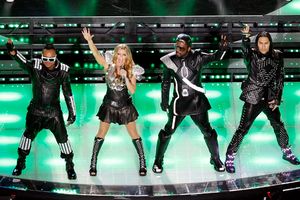
Ernest Angelo of Carmel, Ind., did the song in haiku format:
Ladies wanna zoom!
Shake it, shake it, shake it, boom!
Dancing naked now!
Refrain:
Grab it, shake it, now!
Wanna party feeling now!
Drink! Drank! Pow! Pow! Pow!
Ellie Haverson of Cupertino, Calif., proved that all BEP lyrics can be boiled down to the word "boom":
Boom -- boom, boom.
Boom-boom, boom.
Boom! Boom! Oh baby, boom!
Boom-boom, wanna boom.
Refrain:
Boom-boom-boom.
Oh, baby, wanna boom.
Boom, gotta boom.
Wanna gotta boom-boom-boom.
The best part was that Ellie's song was titled "B.O.O.M. (Boom Of Our Moment)." I gotta get Black Eyed Peas to sing about my book "Sonic Boom," yeah, now, gotta get that now.
The winner is by Amnon Wenger of Bergenfield, N.J., who writes, "Following your instruction, I used only the words you listed plus 'common articles and conjunctions.' The common articles I employed were portions of Common Article 89 of the Geneva Convention."
Daily food rations for internees
shall be sufficient in quantity and variety.
Sufficient drank shall be supplied to internees.
The use of smoke shall be permitted for the ladies:
Wanna toke, wanna smoke here we go party.
Refrain:
Hot legs, hot night, get naked.
Grab body, dancing, shake it.
Boom-boom, wanna drank and toke.
Boom-boom, want money and smoke.
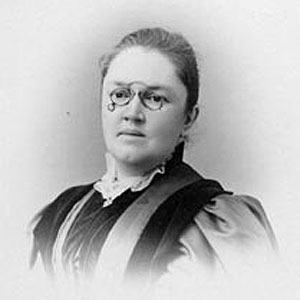
Sing the Whole Song! Once again only the familiar first stanza of "America the Beautiful" was performed at the Super Bowl, this time by Lea Michele, who ladled on the syrup vocally but skipped nearly all the words. This is the best song ever written about the United States -- why are the verses almost never performed? Even my beloved alma mater Colorado College, which sits at the foot of Pike's Peak, whose vista inspired Katharine Lee Bates, uses only half the verses at commencement.
Here is the whole song. "America! America! God mend thine every flaw. Confirm thy soul in self-control, thy liberty in law." This is a wise and magnificent song, why isn't it sung?
Adventures in Officiating: There was no consequential bad call in the Super Bowl, surely causing 280 Park Avenue (NFL headquarters) to breathe a sigh of relief. More important, there was no helmet-to-helmet hit. And the game was fantastic. This supports TMQ's assertion that football can be well-played and exciting without vicious hits.
When Nick Collins scored to make the Packers' lead 14-0, multiple flags flew. Why? Because he strutted for a moment, then went down on his knees to gesture toward the crowd. NFL celebration rules prohibit players from using the ground -- rolling around, dropping to their knees and so on. This silly rule was put in place to stop the electric-worm celebrations of a decade ago. Like all celebration rules, it's silly. Taunting should draw a flag. But why not bounce around happily after a touchdown? At all levels of football, the celebration rule needs revision.
Super Bowl Atmospherics: The Black Eyed Peas left the pleasingly multicultural cry of "mazel tov!" in their rendition of "I Gotta Feeling," but deleted the cry of "drank." Their music might be mindless and repetitious, but their glowing-people staging was the best Super Bowl halftime show in many moons. In a strange pregame videoboard hype, actor Sam Elliott praised the Steelers for playing "smashmouth" football. Can we please have a moratorium on this word? Football need not be vicious to be exciting: The smashmouth cliché sums up everything that must change about the sport.
At one point, the videoboard flashed a view of Hollywood luminaries Harrison Ford and Calista Flockhart, identifying them by name. Unnoted by the videoboard was that they were sitting with former Secretary of State Condoleezza Rice. Everybody knows Ally McBeal is more important than the Secretary of State!
The Cowboys have 17 names on their honorary ring inside the stadium. Only one is of an offensive lineman.
There was a flyover even though the dome was closed, so no one could see the jets. A perfect metaphor for federal budget problems.
Football Teams Should Not Be Treated Like Visiting Heads of State! Mark Roberts of Dallas writes, "I was driving on Feb. 2 and what should I see hurtling up the freeway but eight Irving Police cruisers with lights blazing. I thought there must be an emergency in Dallas, maybe because of the ice storm. The eight police cars flew past me and then, a minute behind them, came four busses flanked by several more Irving Police cars, with police motorcycles bringing up the rear. It was the Green Bay Packers, heading from their hotel to a practice facility. I have a good friend who is an Arlington policemen and he told me the NFL picks up the tab for all the overtime and extra security a Super Bowl involves. That's good, but why does being a football team give you the right to stop traffic?" Even ESPN's eight busloads of VIP guests received a stopped-traffic police escort.

The Dallas-Fort Worth area was hit first with ice and then with snow in the week before the Super Bowl, and, needless to say, Texas doesn't devote a lot of spending to winter road crews. Most public schools were closed the entire week, and, by Friday morning, moving around was hard for most people. But not for the Super Bowl teams or NFL officials -- the Fort Worth Star-Telegram (known locally as the Startle-Gram) reported that all roads being used by team buses and NFL officials were immaculate. Why should scarce plow-and-sanding equipment be diverted away from average people's needs so that football players and football executives are never inconvenienced?
Reader Comments: James Knapp of Columbia, Mo., writes, "I'm a grad student TA at the University of Wisconsin. This semester I have a track team member in class. Everyone on track will miss 11 Fridays this semester for away meets, including all Fridays in April. College presidents complain that a Division I football playoff would lead to too much class time missed. In my experience as a TA at two big schools, Mizzou and Wisconsin, football players miss the least amount of class time for athletics. Track, swim team, baseball, others -- they participate in far more away-from-school athletic events than football players."
I noted that defense usually trumps offense in the playoffs, and gave examples. Amir Khan of New York City offers several more: "In 1983, the Washington Redskins scored a then-record 34 points per game in the regular season, with a 14-2 record -- and lost the Super Bowl to the Oakland Raiders, by 38-9. In 1984, when Dan Marino had his best season, throwing for over 5,000 yards and a then-record 48 touchdown passes, the Dolphins went 14-2 and led the league in scoring with 513 points. But they lost the Super Bowl to San Francisco, outscored 38-16. When Peyton Manning set what was then the passing touchdown record with 49 in 2004, the Colts led the league in scoring with 522 points. But they lost in the divisional round to the Patriots 20-3."
Next Week: The stadium lights are turned off, the film rooms are dark and the cheerleaders have put their miniskirts away in very small drawers. But one act of the NFL season remains -- the annual Tuesday Morning Quarterback Bad Predictions Review. Here's a preview: Everyone was wrong about everything, except me!
In addition to writing Tuesday Morning Quarterback for Page 2, Gregg Easterbrook is the author of the new book "Sonic Boom" and six other books. He is also a contributing editor for The New Republic, The Atlantic Monthly and The Washington Monthly. His website can be found here.
 |
| • Philbrick: Page 2's Greatest Hits, 2000-2012 |
| • Caple: Fond memories of a road warrior |
| • Snibbe: An illustrated history of Page 2 |
| Philbrick, Gallo: Farewell podcast |
- Author of "The King of Sports"
- Former Fulbright distinguished fellow
- Contributing editor to "The Atlantic"
ALSO SEE
- Easterbrook: Why won't Rodgers, Packers reveal helmet?
- Easterbrook: A Super Bowl with no cheerleaders
- Easterbrook: The real cause of the Patriots' loss
- Easterbrook: Make academics part of BCS
- Easterbrook: Handing out the TMQ MVP
- Easterbrook: TMQ's All-Unwanted team
- Easterbrook: TMQ's wish list for each NFL team
- Easterbrook: Snow is advantage for Patriots
- Easterbrook: Priorities wrong in college sports
- Easterbrook: What's wrong with the Colts?
- Easterbrook: Welker can play for TMQ any day
- Easterbrook: Daniel Snyder's Redskins follies
- Easterbrook: Brett Favre's time has passed
- Easterbrook: Change in helmets needed for '11
- Easterbrook: NFL must penalize dangerous hits
- Easterbrook: The fast-paced Oregon offense
- Easterbrook: How to navigate college recruiting
- Easterbrook: How to be recruited
- Easterbrook: Flavor of the day -- 3-4 defenses
- Easterbrook: TMQ urges concussion awareness
- Easterbrook: TMQ salutes the surprising Texans
- Easterbrook: The original all-haiku NFL forecast
- Easterbrook: TMQ previews the NFC
- Easterbrook: TMQ previews the AFC
- Easterbrook: TMQ makes his triumphant return
- Easterbrook: 2010 NFL draft in review
- Easterbrook: Ultimate mock draft
ESPN TOP HEADLINES
RECENT ACTIVITY
-
TOOLS
- Contact Us
- Corrections
- Daily Line
- RSS
